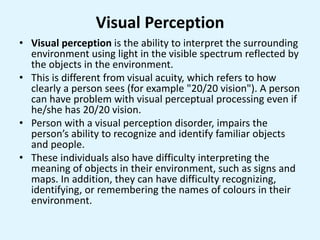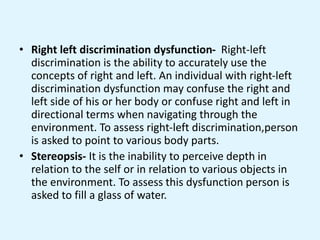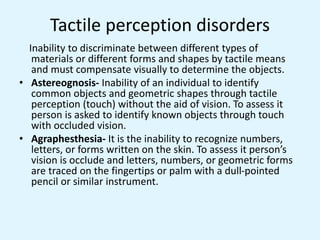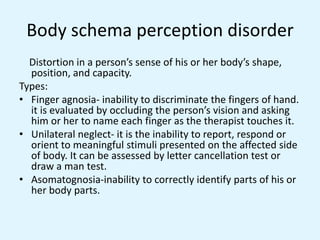This document provides information on various types of perception disorders, including visual, tactile, body schema, and motor perception disorders. It defines key terms like agnosia, apraxia, neglect and discusses how to assess deficits in areas like visual recognition, tactile identification, praxis, construction and more. Assessment involves tasks like identifying objects by sight or touch, naming fingers, copying designs, and demonstrating spatial understanding. Perceptual disorders can affect many daily living skills and safety.

![Perception
• Perception is the mechanism by which the brain interprets
sensory information received from the environment.
• Perception is the gate away to cognition.
• This perceived information is then processed by the various
cognitive centers in the brain. The individual may then
choose to respond with a motor act or a verbal expression.
• In early development, tactile, proprioceptive, vestibular,
and visual perception provide an internalized sense of body
scheme, which is basic to all motor function.
• Severe perceptual deficits, frequently combined with
cognitive impairments, can affect every area of
occupation(e.g., activities of daily living [ADLs], education,
work, play, leisure, and social participation) and can present
with grave safety concerns.](https://image.slidesharecdn.com/perception-200604142804/85/Perception-2-320.jpg)








